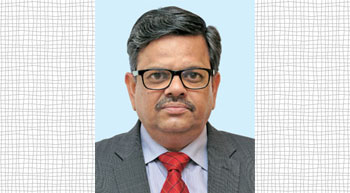Manoj Garg, MD, Herrenknecht India Pvt Ltd, says the boom in tunnelling is across all sectors, from utilities and public transport to oil & gas and conduits for power and phone lines.
When is it appropriate to deploy TBMs?
Tunnels play a key role in many projects, because they are very often key components on routes. Modern tunnel boring machines and construction technologies make it possible to build routes that run very close to ideal lines, bringing a real breakthrough for routes that would have been inconceivable in earlier times. The machines used are always precisely designed for the purpose in question in each case depending, for example, on the geology, hydrology, the diameter or the construction site circumstances. Mechanised tunnelling projects can be carried out and controlled safely, and can be adapted exactly to ground conditions, diameters, depths, gradients, curves, lengths and the topographic conditions along the route.
What are the opportunities in hydro-power?
A variety of rivers, glaciers and lakes offer huge potential for the use of hydro-power in the Himalayas. As part of the construction and extension of hydro-power plants, more than 140 km of horizontal or inclined galleries and vertical shafts have been produced using innovative tunnelling technology of Herrenknecht. It has been involved in several types of hydro-power plants: run-of-the-river power generation, storage power stations or pumped-storage hydroelectric power plants.
Small rivers in the mountains offer ideal conditions for small hydro-power plants. At the same time they are inhospitable terrain for construction work. For this, customers have taken advantage of compact machine designs that simplify the transport to the job sites as well as assembly and disassembly. For the event that the machine could not be recovered in a target pit, the TBM could be designed for retraction through the tunnel after tunnelling in an escarpment.
What is the importance of geo technical site investigations?
A professional evaluation of geological profiles is the basis for choosing the optimum tunnelling technology. The ground conditions act as starting point. The most important basis for planning and construction of a tunnelling project is knowledge about the characteristics of the subsoil, i.e. the geo technical and hydro-geological conditions. The first information on the ground conditions is achieved by evaluating general and detailed geo technical maps. Probing methods, for e.g., using surface exploration sites and sounding borings, make it possible to describe the ground quality and characteristics in the required detail to assure optimum TBM design.
Not only is the choice of method important, but special focus is also placed on the cutting wheel design. The ground condition parameters have a great influence on the design of the cutting wheel, its opening ratio and the required tools. Taking the appropriate measures can minimise wear, tear and clogging, while optimising soil and rock excavation.
How can the economics of tunnel construction be improved?
The demand for integrated technical solutions increases particularly when working on large-scale tunnel projects in order to increase technical, operational and commercial synergies and to realise many advantages. The better the job site operations are interlinked – from TBMs and additional logistics equipment to the operative processes and service units right up to the expert teams – and the more closely they are coordinated, the greater the project efficiency.
What is the growth in India demand for TBMs?
The need for rapid and efficient public transport systems is growing. In addition, cities are investing in new water and sewage systems to enhance living comfort and provide basic supply services. The efficient supply systems built underground include gas and oil pipelines, conduits for power, internet and telephone lines as well as infrastructure for hydro-power plants.
What are the best practices followed in tunnel design?
Herrenknecht has a wide and long experience as well as a lot of references in India. On one hand, there are big urban development projects like the implementation of new metro systems. Herrenknecht has been and is involved, starting at the beginning of this century with the Delhi Metro Phase-1, followed by Phase-II and Phase-III. Herrenknecht TBMs also are engaged for metro systems in Bangalore, Chennai and Kolkata. Also, in the area of utility tunnelling, there is a wide range of projects realised from customers with Herrenknecht equipment. In the last decades, there have been several successfully completed drives marking new feasibility standards in tunnel construction worldwide.
Tell us about the Mumbai drinking water tunnel project.
In 2013, SOMA Enterprises completed a tunnel for Mumbai Water Stage IV. Using Herrenknecht Gripper TBM S-625 (diameter 6,230 mm) in conjunction with H vertical and continuous tunnel conveyors, 6,462 m of tunnel at a depth of 110 m was constructed under 17 months. The best daily performance was 55.82 m and the best weekly performance was 215 m. The best monthly performance was 772 m. Two really small Gripper-TBMs (M-1249, ÿ 2.8 m / M-1150, ÿ 3.0 m) produced the tunnel for the Mumbai BMC Yari and Malbari Hill Stage II projects in challenging geology.



Leave a Reply
You must be logged in to post a comment.